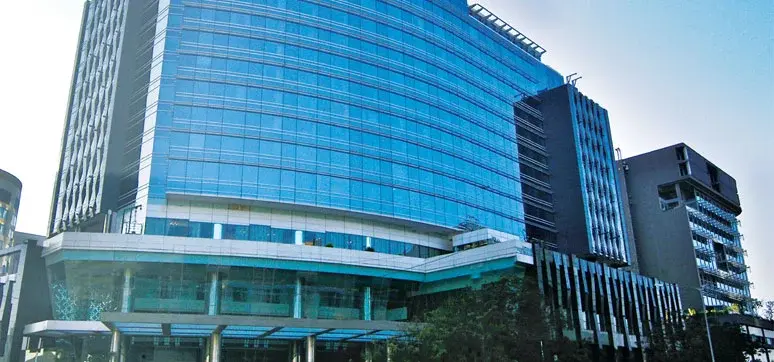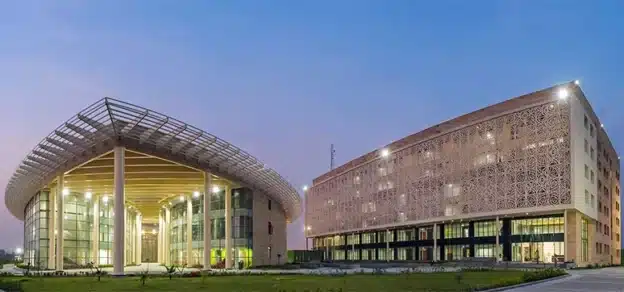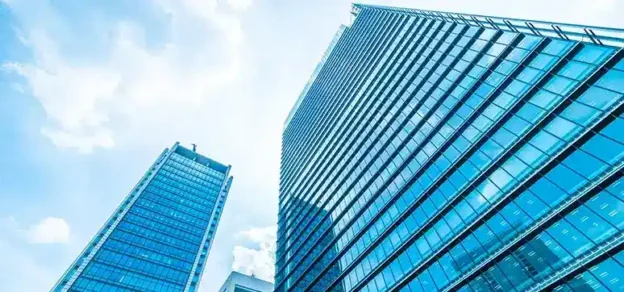Sustainable. That’s perhaps the most spoken buzzword in architectural circles today. With climate change trending all social media, an increasing world population, resulting in limited resources being shared by a larger consumption pool and energy generation, increasing at a faster rate than its replenishment, developers and architects are entrusted, both logically and morally, With an important responsibility to ensure that the carbon footprint from their construction is either ideally zero or as close to this magic number as possible. So, what makes a building sustainable? At a very fundamental level – the materials used for its construction. Of course, its design and layout are the foundational philosophy that dictates its sustainable intent, but without the right choice of material, even the best design will yield little or no results Hence it becomes imperative that architects and consultants work with material suppliers at the very concept design stage to find the most optimum material fit.
Enter Glass
Unarguably, the most indispensable building material for all modern constructions, transgressing all usage types, whether it is residential, commercial, hospitality or mixed-use. The benefits justifying its ubiquitous appeal are several and well-known, but out of the scope of this article. However, it is important to point out, in the context of what is to follow, that the wrong choice and usage of glass can be hugely detrimental to the building’s ‘sustainable quotient’. Hence, in no uncertain terms, I wish to point out that the use of glass in sustainable buildings has to be carefully mapped and implemented, especially in tropical climates like India’s.
To understand the meaning of intelligent glass façades, let’s step back around two decades when spectrally selective coatings were introduced and thus paved the way for energy-efficient façades. With time, coatings became more advanced and resulted in their increased use in sustainable constructions, the external climatic conditions notwithstanding. The intent of this article is to highlight the next wave, and if I may say – revolution, in sustainable glass. The slow but steady shift from energy-efficient glass to intelligent glass. What makes intelligent glass? Simply put its ability to intelligently adapt itself to external and internal climatic conditions. Some might confuse this with dynamic façades, however, there are some glass types that I will highlight that can behave intelligently without changing form.
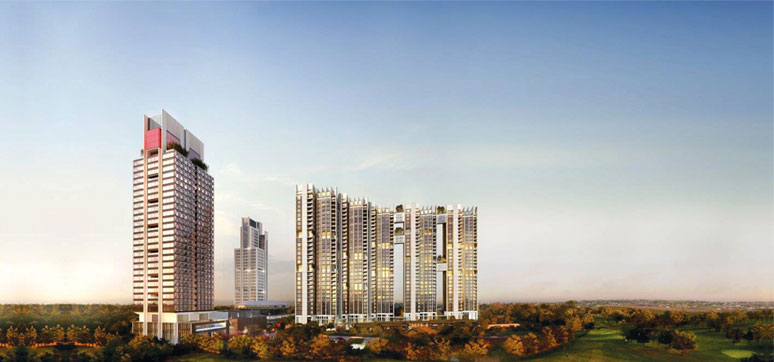
Dynamically Tinting Glass
One of the most promising new technologies in the field of intelligent glass is electrochromic glasses or dynamically switchable glasses. These glass types use electronic control to vary their light and heat transmission, either manually or through pre-programmed control logic. These glasses have a significantly higher range of light and heat transmission that starts with almost zero and stretches to the high fifties. This means that sustainable buildings enjoy the flexibility of both low light consumption as well as low HVAC expenses.
One of the most promising and emerging technologies in this field is the LicrivisionTM glass from Merck. Manufactured in the Netherlands, LicrivisionTM is a switchable Liquid Crystal Window (LCW) glass that uses liquid crystals sandwiched between two glass lites to create an ‘on demand’ dynamically tinting façade. These units are haze-free, require almost negligible power to change states and unlike coated electrochromic glasses, switch between different light transmission states in less than a second. From a sustainability perspective, these glasses are an ideal fit, since periods with high heat and light transmission can be countered with dark state, and early morning or late evening periods can be complemented with lighter switching states. While its comparatively high cost is currently a limiting factor to its mass proliferation, it remains a matter of time before this technology will become affordable and widely available.
Aerogel Infilled Glass
Daylighting is a powerful design element, one that is not only desirable but also an important nature-gifted tool to ensure high productivity and happiness levels for the occupants. However, it comes with one unwanted feature: glare. Glare can be highly disturbing and results in most windows and glass walls being blocked from the remaining architecture by the use of curtains or blinds.
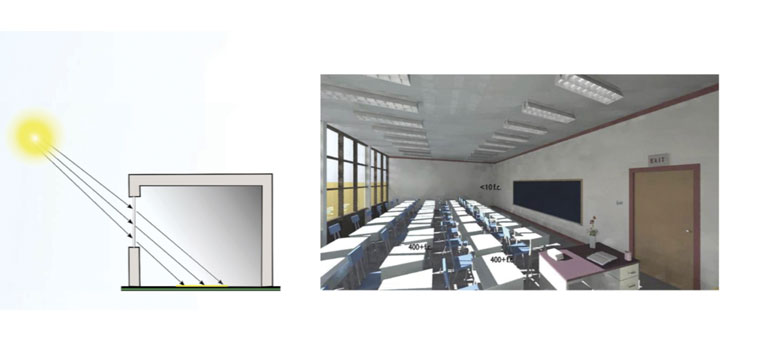
An exciting new development to help address the glare problem is aerogel-infilled glasses. Developed in the laboratories of Canada by Advanced Glazings, Solera® aerogel glasses are wide-angle light diffusers that help to scatter light evenly across the interior space, in comparison with regular glass which transmits light in straight lines. To understand better, consider the figures below.
As shown, conventional glass windows are not light diffusing and allow light to pass in straight lines. This results in high glare levels, inconsistent lighting within the interior space and also thermal discomfort.
In contrast, Solera aerogel-infilled glasses scatter the light flowing through it evenly across the room. This completely eliminates glare, creates pleasingly lit interiors and has extremely low heat flow rates as well, with U-Values as low as 0.31 W/m2K. Solera glass, however, is translucent in appearance and needs to be used smartly in architectural spaces to create truly intelligent façades.
Digitally Printed Glass
Another increasingly popular development in the field of glass glazing is digitally printed glass. Conventional ceramic printing deposits ceramic-based inks through a silk screen and every new design require a new screen. This limits the design and functional flexibility. Also, there is a limitation in the number of colours possible. In contrast, digitally printed glasses are produced on a printing machine that looks and performs similarly to a conventional inkjet paper printer. The advantages of digitally printed glass are several: limitless design possibilities, almost infinite colour reproductions, no setup costs and ease of replacements.
Digitally printed glass can also be used to create stunning intelligent façades. With options like dual colour frits possible, façades can have a unique design and colour when seen from the outside and internally it could be painted neutral black. This results in extremely neutrally looking façades when viewed from the inside, and when smartly designed (for instance, reproduction of gradients and images with extremely small diameter dots), the print becomes almost invisible! Digitally printed façades also help cut down on the solar heat gain and in some cases can act as an effective light diffuser.
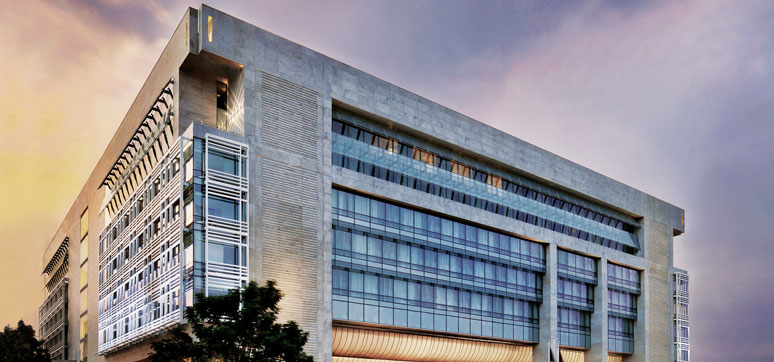
In Conclusion
Apart from the above-mentioned glass types, there are several other existing and under-development glasses that find use in creating sustainable buildings. Amongst these, mesh-infilled glasses, Sefar fabric-infilled glasses and increasingly higher-performance coatings are some examples.
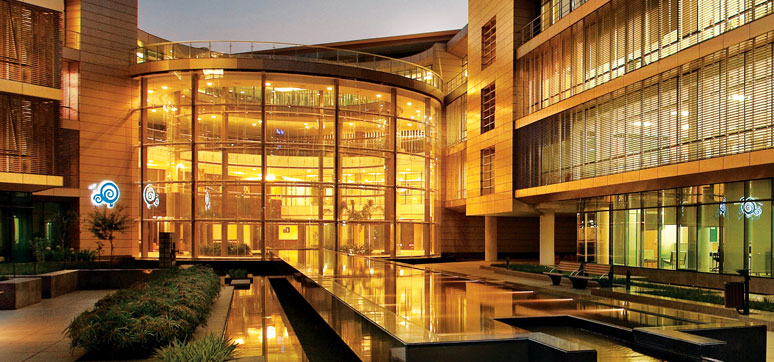
It is important to note however that not all intelligent glass can create truly sustainable buildings. Glass, as with other building elements is simply a tool at the disposal of designers to help them create façades that not only aesthetically conform to their design intent but are also functionally effective. And in more instances than not, glass needs to be combined with other elements such as external shading elements to be able to perform at their peak level. Intelligent façades also imply other important characteristics such as safety, post-breakage characteristics and acoustic comfort to name a few and its selection in the right combination is critical for a holistic performance. Considering the fact that buildings are the number one contributor to increasing the global carbon footprint, all stakeholders in the construction space should responsibly contribute to making buildings sustainable – both for reducing its impact on global warming and for enhancing the comfort of occupants. We need to look no further than nature to understand the remarkable sustainability of every creature and every element that exists. “Those who look for the laws of nature as a support for their new works collaborate with the creator”, once said the famous Spanish architect, Antoni Gaudi. I couldn’t agree more.
